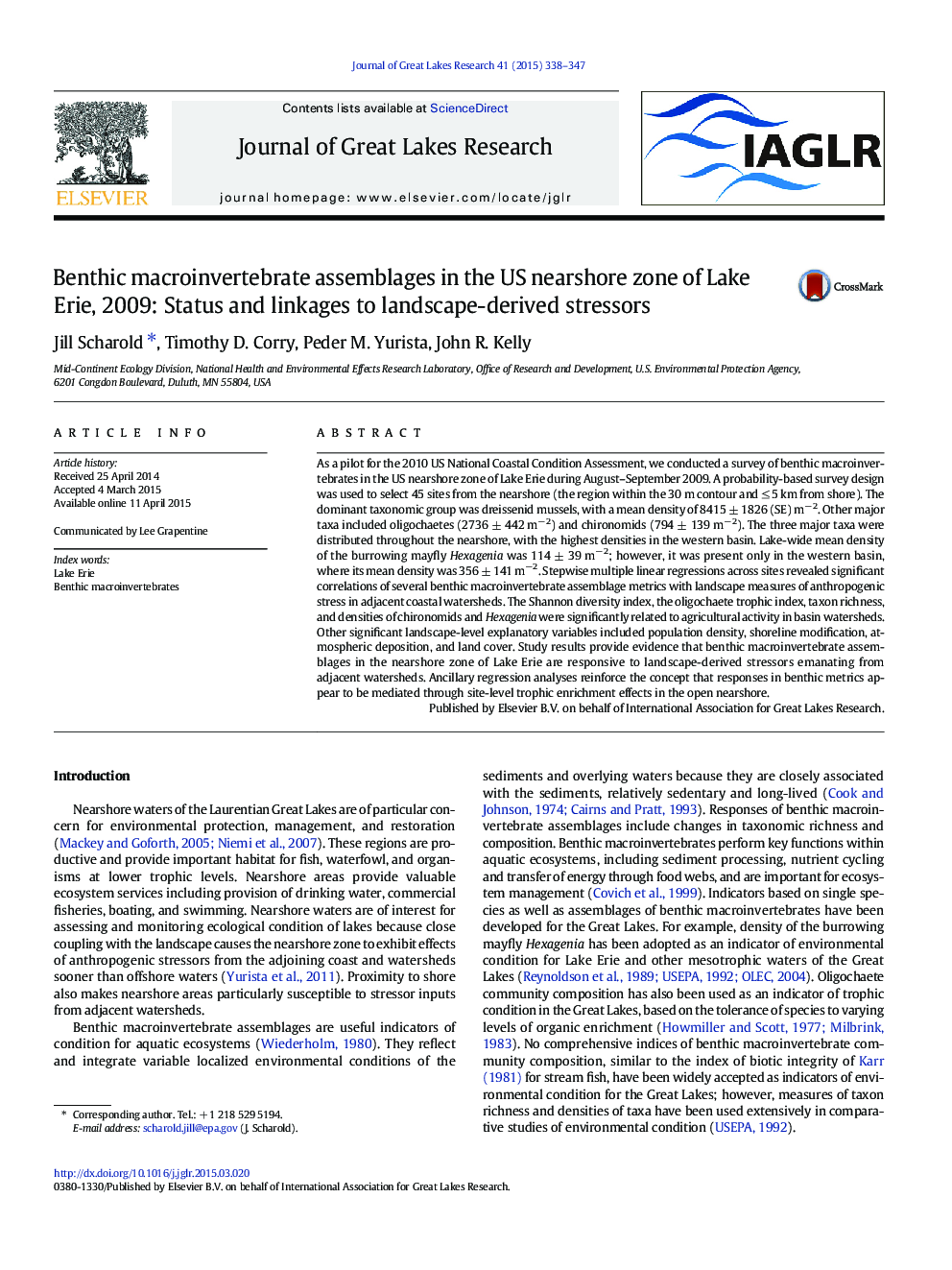| Article ID | Journal | Published Year | Pages | File Type |
|---|---|---|---|---|
| 6304992 | Journal of Great Lakes Research | 2015 | 10 Pages |
Abstract
As a pilot for the 2010 US National Coastal Condition Assessment, we conducted a survey of benthic macroinvertebrates in the US nearshore zone of Lake Erie during August-September 2009. A probability-based survey design was used to select 45 sites from the nearshore (the region within the 30 m contour and â¤Â 5 km from shore). The dominant taxonomic group was dreissenid mussels, with a mean density of 8415 ± 1826 (SE) mâ2. Other major taxa included oligochaetes (2736 ± 442 mâ2) and chironomids (794 ± 139 mâ2). The three major taxa were distributed throughout the nearshore, with the highest densities in the western basin. Lake-wide mean density of the burrowing mayfly Hexagenia was 114 ± 39 mâ2; however, it was present only in the western basin, where its mean density was 356 ± 141 mâ2. Stepwise multiple linear regressions across sites revealed significant correlations of several benthic macroinvertebrate assemblage metrics with landscape measures of anthropogenic stress in adjacent coastal watersheds. The Shannon diversity index, the oligochaete trophic index, taxon richness, and densities of chironomids and Hexagenia were significantly related to agricultural activity in basin watersheds. Other significant landscape-level explanatory variables included population density, shoreline modification, atmospheric deposition, and land cover. Study results provide evidence that benthic macroinvertebrate assemblages in the nearshore zone of Lake Erie are responsive to landscape-derived stressors emanating from adjacent watersheds. Ancillary regression analyses reinforce the concept that responses in benthic metrics appear to be mediated through site-level trophic enrichment effects in the open nearshore.
Keywords
Related Topics
Physical Sciences and Engineering
Earth and Planetary Sciences
Earth and Planetary Sciences (General)
Authors
Jill Scharold, Timothy D. Corry, Peder M. Yurista, John R. Kelly,
